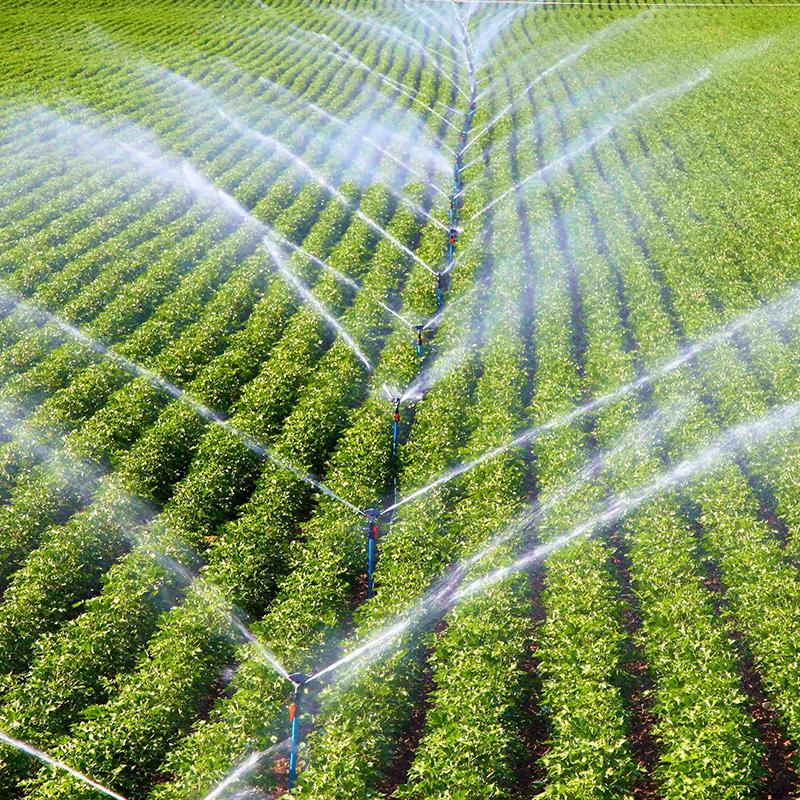Micro Irrigation a way of sustainable agriculture
It is evident from various scenarios and increasing population that the water crisis in coming years is going to worsen in the country and agriculture standing up as the major sector consuming more water accounting for more than eighty percent usage of available groundwater.
Experts say, to acquire maximum yields you don't need to use a lot of water. Appropriate irrigation given in the right time would necessitate good yields in agriculture. This is possible through micro irrigation.
Micro irrigation came into picture in recent times, when the farmers are facing water scarcity and more amount of water per acre was required to produce good yield. There was a need for sustainable irrigation techniques and government has introduced various schemes like more crop per drop or The pradhan mantri krishi sanchyee yojana, Financial assistance of upto 55 percent was provided by the government of India for adopting micro irrigation since micro irrigation reduces the amount of water required per plant thus water is being supplied directly to the root zone of the plant.
Micro-irrigation can boost yields while lowering water, fertilizer, and labor costs. This practice reduces water loss by conveyance, run-off, deep percolation, and evaporation since water is directly supplied to the root zone.The water loss however cannot be avoided through traditional irrigation practices, around 75 % of water use efficiency is observed by adopting micro irrigation.
Fertigation is another technique associated with which is the combination of water and fertilizer applied directly to the root zone through irrigation. Fertigation favors even distribution of nutrients to the plants thus decreasing the amount of fertilizer that would be required for producing higher yields.
Features of micro irrigation
The most effective feature of micro irrigation is that the water is directly supplied to the plants and not the other areas of the fields thus reducing water wastage
Optimum soil moisture is maintained thus helping crops grow at a faster pace.
Application of water at slow rate thus maintaining air-water balance in the root zone.
Micro irrigation uses pumps in order to develop the pressure required for delivering water through the pipes.
Field capacity is maintained which means the soil particles present in the soil is filled with both air and water thus making the soil ideal for crop growth and development.
Classification of micro irrigation:
Two types of micro irrigations are usually in practice in India which include:
- Drip irrigation
- Sprinkler irrigation

Water delivering directly to the root zone
Drip Irrigation
The emitters directly deliver the water to the root zone of the plant in a drip irrigation system. Emitters. These emitters use vents, twisters, and convoluted or extended flow paths to maximize and spread the pressure from the water source, allowing just a little amount of water to pass through. The emitters can either be placed on the ground or be planted in the soil.The water flowing through the emitters travels at a desired rate without experiencing any barriers.
Crops suitable for drip irrigation
Drip irrigation is most suited for various crops like leafy vegetables, root crops, fruit orchards, medicinal plants and flower crops and factors like the variety of the crops, spacing, land preparation, topography, availability of water, purity of water, electricity, crop rotation, water holding capacity and many more
Sprinkler irrigation
This type of irrigation system discharges the water at very high pressure using tiny nozzles with a very small diameter present in the pipes; these nozzles enable water discharge which resembles that of rain. vegetables and other allied vegetable crops.
Advantages of micro irrigation
- There has been a substantial increase in yield of fruit crops which accounted for 42.3% and 52.8% in vegetable crops,
- Reduced cost of irrigation: the irrigation costs however has gradually decreased to 32%.
- Electricity saving- It is evident that the electricity consumption for micro irrigation is much less when compared to traditional irrigation methods.
- Micro Irrigation maintains soil moisture thus increasing overall productivity of the crops.

Sprinkler irrigation
Download Jai Ho Kisan App for more information on water management of various crops. Jai Ho Kisan is the digital platform envisioned to harvest smile on farmer’s face thus providing services like crop advisory, daily market rates, information on loans and schemes and many more